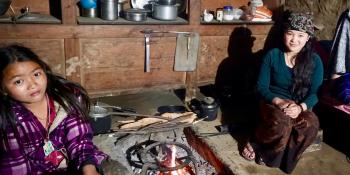Measuring Uptake and Benefits of Clean Technologies for Heat, Water, and Light
Measuring Uptake and Benefits of Clean Technologies for Heat, Water, and Light
What factors influence household decisions on using new technologies and can training improve outcomes?
What factors influence household decisions on using new technologies and can training improve outcomes?
Daily exposure to smoke, contaminated drinking water, and a lack of electricity can easily be reduced or eliminated through the use of relatively inexpensive household products – saving energy and reducing environmental impacts in the process. But households are slow to adopt them when they are expensive or clash with ingrained behaviors. EPoD researchers are experimenting with ways to remove the barriers between households and clean technology.
According to the International Energy Agency, over 600 million Indians still rely on solid fuels for cooking and heating. These open fires or simple cookstoves expose women and their families to airborne pollutants many times higher than what is considered safe. Both short and long-term health implications can be devastating: over 750,000 deaths per year are related to indoor air pollution associated with solid fuels. Even as cleaner fuels, such as liquefied petroleum gas (LPG), become more widely available, the occasional use of open fires in enclosed spaces poses serious health risks. Households in rural areas in particular may also struggle to obtain clean water and consistent electricity, with both health and financial implications.
EPoD researchers are working with a microfinance institution (MFI) in southern India that is providing loans for products that address these constraints: efficient cookstoves, water purifiers, and solar lamps. Researchers are using a randomized rollout of the loan availability to determine how access to these products impacts well-being, including income, health, women’s empowerment, and time management. In addition, the team will seek to better understand and precisely measure how trainings on the importance of efficient cookstoves can modify behavior. Working with engineers at MIT’s D-Lab, the team is using an innovative combination of sensors to monitor both stove use and indoor air quality and test the impact of training and personalized information sessions on borrowers’ use of different types of stoves.
Principal Investigators:
Rohini Pande
Anca Balietti, Harvard University
Giorgia Barboni, University of Warwick
Parul Agrawal, Institute for Financial Management and Research
Daniel Sweeney, Massachusetts Institute of Technology
This research is supported by:
The Netherlands Development Finance Company
This project is implemented by Evidence for Policy Design (EPoD) at the Harvard Kennedy School in collaboration with EPoD India at IFMR, a joint program by EPoD at the Harvard Kennedy School and the Institute for Financial Management and Research (IFMR), and IFMR LEAD.
Highlights
Promoters of safer cookstoves have struggled to find the perfect balance of efficiency, price, and a user-friendly design that would drive widespread adoption.







